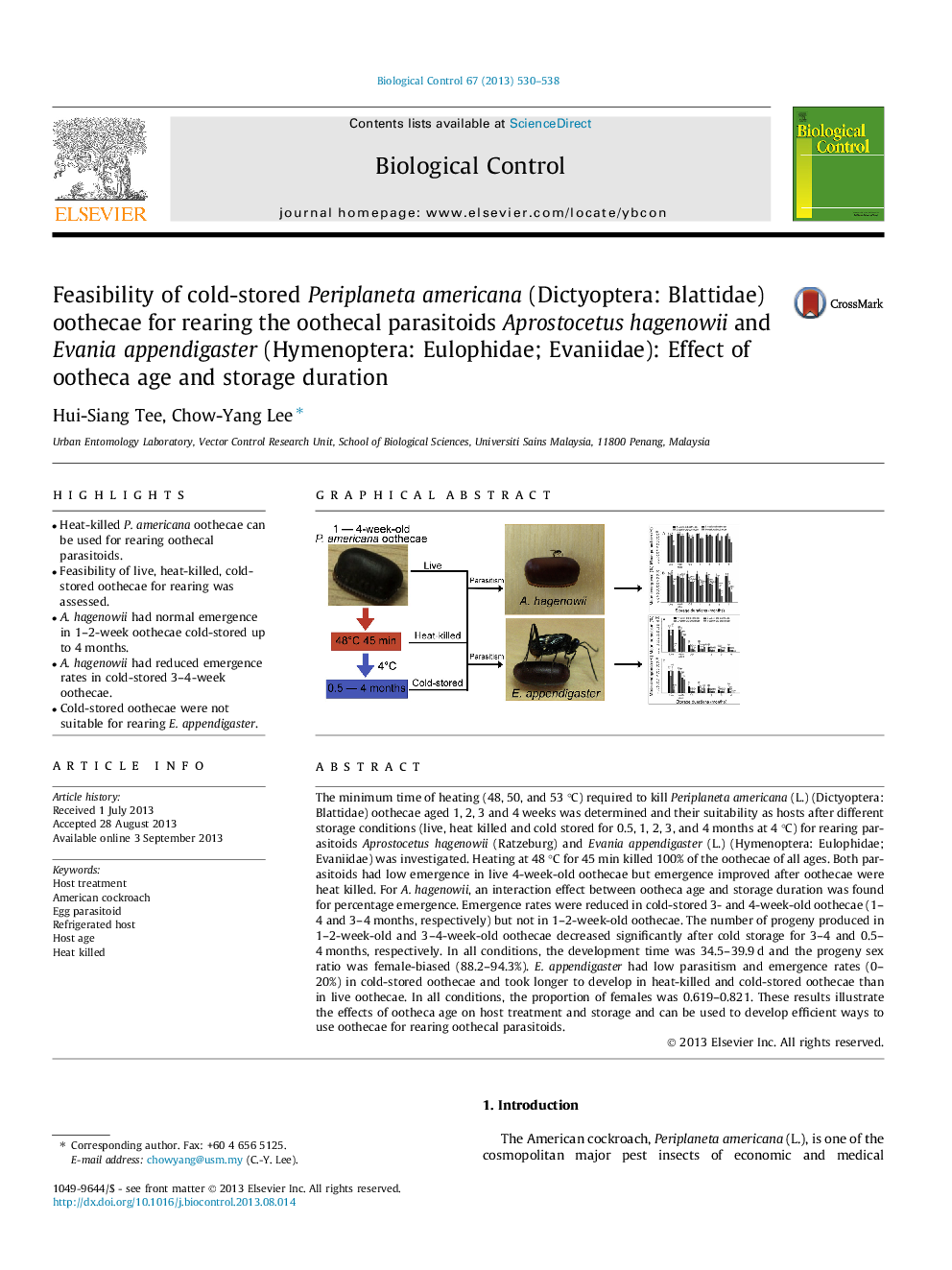| Article ID | Journal | Published Year | Pages | File Type |
|---|---|---|---|---|
| 6372712 | Biological Control | 2013 | 9 Pages |
â¢Heat-killed P. americana oothecae can be used for rearing oothecal parasitoids.â¢Feasibility of live, heat-killed, cold-stored oothecae for rearing was assessed.â¢A. hagenowii had normal emergence in 1-2-week oothecae cold-stored up to 4 months.â¢A. hagenowii had reduced emergence rates in cold-stored 3-4-week oothecae.â¢Cold-stored oothecae were not suitable for rearing E. appendigaster.
The minimum time of heating (48, 50, and 53 °C) required to kill Periplaneta americana (L.) (Dictyoptera: Blattidae) oothecae aged 1, 2, 3 and 4 weeks was determined and their suitability as hosts after different storage conditions (live, heat killed and cold stored for 0.5, 1, 2, 3, and 4 months at 4 °C) for rearing parasitoids Aprostocetus hagenowii (Ratzeburg) and Evania appendigaster (L.) (Hymenoptera: Eulophidae; Evaniidae) was investigated. Heating at 48 °C for 45 min killed 100% of the oothecae of all ages. Both parasitoids had low emergence in live 4-week-old oothecae but emergence improved after oothecae were heat killed. For A. hagenowii, an interaction effect between ootheca age and storage duration was found for percentage emergence. Emergence rates were reduced in cold-stored 3- and 4-week-old oothecae (1-4 and 3-4 months, respectively) but not in 1-2-week-old oothecae. The number of progeny produced in 1-2-week-old and 3-4-week-old oothecae decreased significantly after cold storage for 3-4 and 0.5-4 months, respectively. In all conditions, the development time was 34.5-39.9 d and the progeny sex ratio was female-biased (88.2-94.3%). E. appendigaster had low parasitism and emergence rates (0-20%) in cold-stored oothecae and took longer to develop in heat-killed and cold-stored oothecae than in live oothecae. In all conditions, the proportion of females was 0.619-0.821. These results illustrate the effects of ootheca age on host treatment and storage and can be used to develop efficient ways to use oothecae for rearing oothecal parasitoids.
Graphical abstractDownload full-size image
